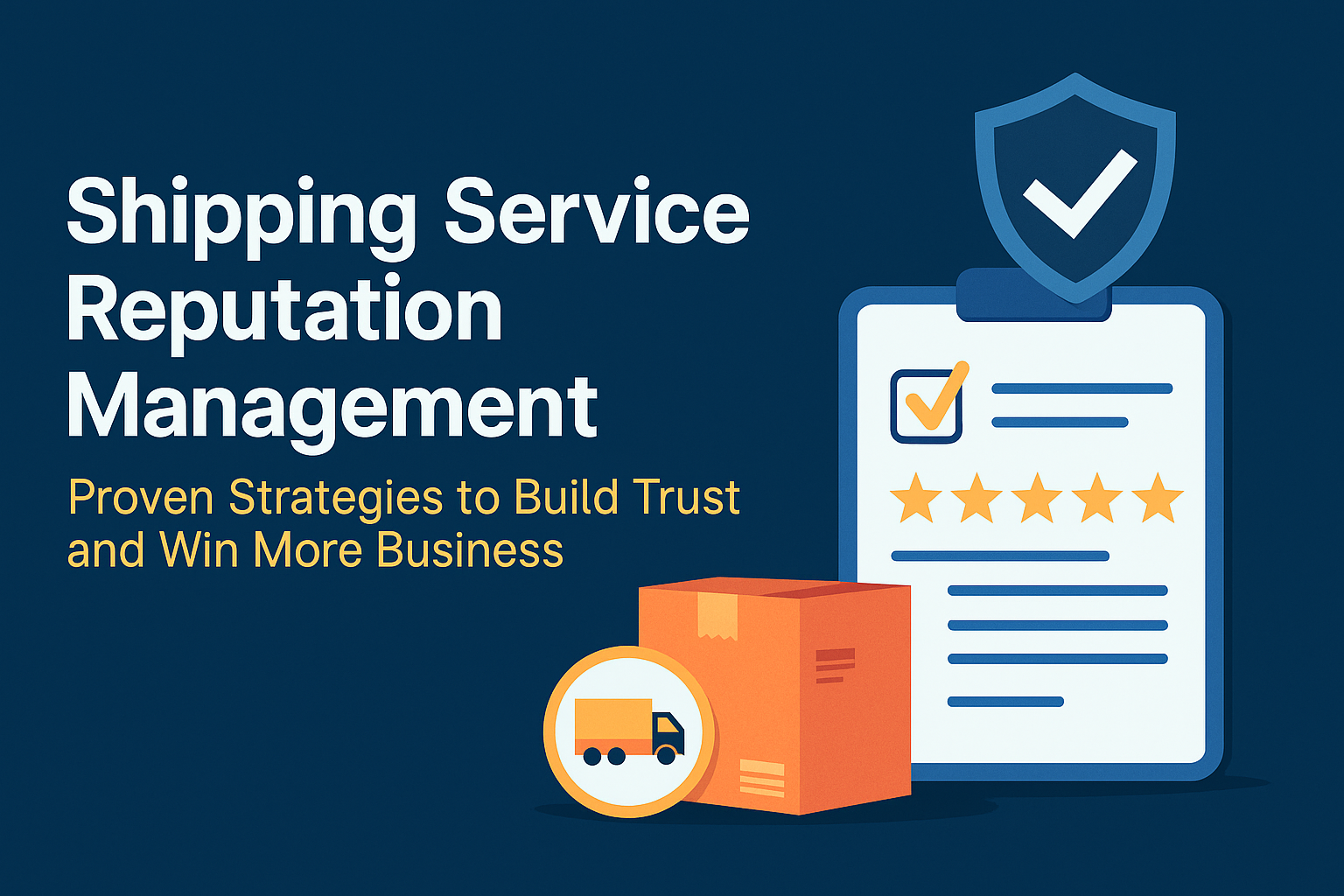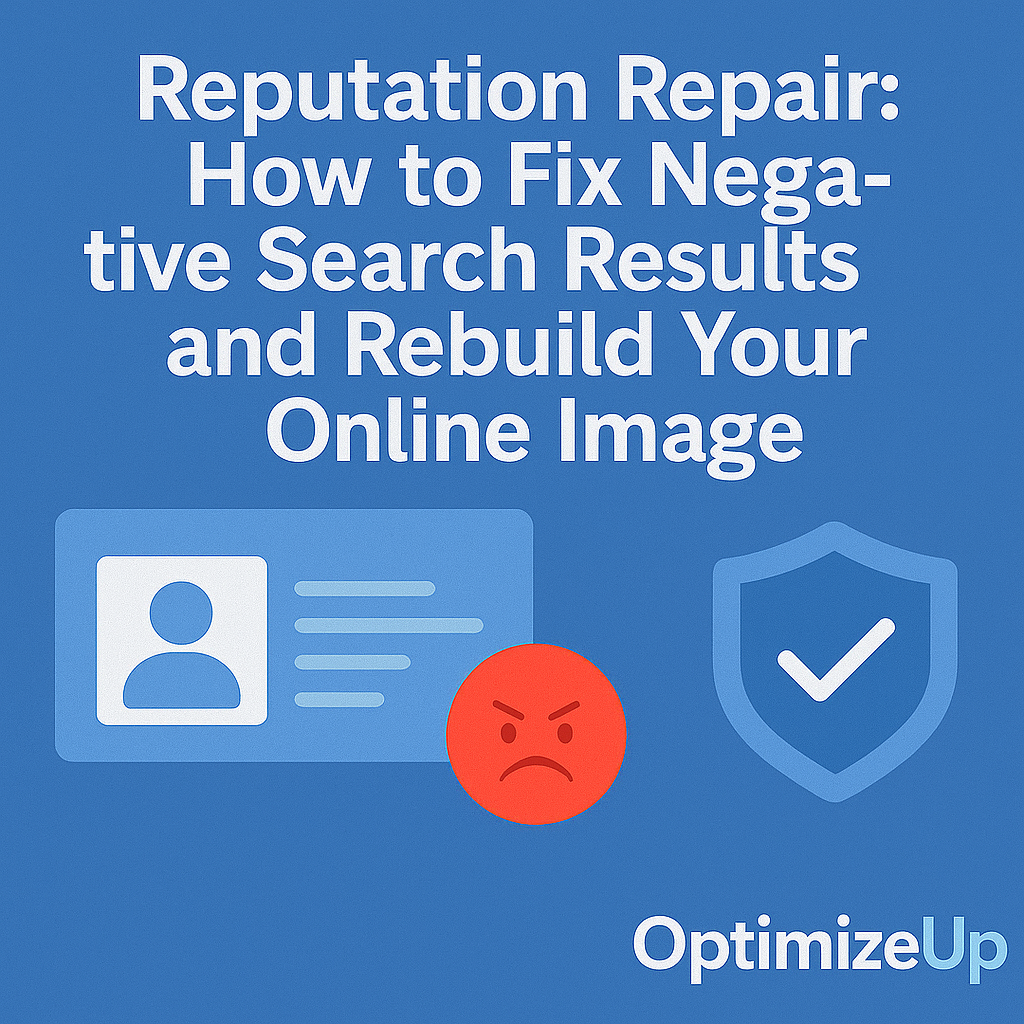Whether you’re a courier company, freight forwarder, or eCommerce shipping partner, your reputation can either boost or break your bottom line. With customer reviews accessible at the click of a button, prospective clients are making split-second decisions based on what others say about your performance.
From delayed deliveries and mishandled goods to top-rated customer service, everything becomes part of your online footprint. That means shipping service reputation management isn’t just important—it’s critical.
In this comprehensive guide, we’ll cover everything logistics companies need to know to maintain, repair, and enhance their brand reputation in a competitive environment.
Why Reputation Matters in the Shipping Industry
Trust is currency in the shipping sector. Clients depend on you to deliver their goods on time and in good condition. If trust erodes, so does your client base.
Key Stats:
- 93% of customers say online reviews influence their buying decisions (BrightLocal).
- 87% of B2B buyers conduct online research before selecting a logistics provider.
- Negative reviews can lead to a loss of up to 22% of business prospects.
This makes proactive reputation management vital for both small shipping providers and enterprise freight carriers.
The Core Elements of Shipping Reputation Management
1. Online Reviews & Ratings
Your Google Reviews, Trustpilot, BBB, and industry-specific sites like Freightos or Transport Reviews shape public perception.
2. Search Engine Presence
What shows up when someone Googles your company? The top 10 results influence credibility.
3. Social Media Feedback
Unhappy customers often air grievances on Facebook, X (formerly Twitter), or Reddit.
4. Third-Party Forum Mentions
Industry forums and discussion boards may carry comments that affect perception.
5. Regulatory or Legal Records
FMCSA complaints or public lawsuits can appear in search results.
7 Proven Strategies to Manage and Improve Shipping Service Reputation
1. Claim and Monitor All Review Platforms
Use tools like Google Alerts, BrandYourself, or Optimized Up’s Monitoring Services to track your brand mentions.
Tip: Claim profiles on all major review platforms. Respond publicly to every review—especially the negative ones.
2. Prioritize Customer Communication
Poor communication often fuels negative feedback.
- Offer shipment tracking and delivery updates.
- Use automated notifications for delays.
- Provide clear customer support channels.
- Implement AI chatbots for 24/7 assistance.
3. Resolve Issues Proactively
Reach out before a client posts a negative review. Offer refunds, discounts, or reshipments where necessary. Maintain a CRM to log issues and track resolutions.
4. Encourage Positive Reviews
Ask satisfied customers to leave reviews. Timing matters—ask right after a successful delivery.
- Email follow-ups
- QR codes on packages
- Text message links to review platforms
- Incentivize feedback with loyalty perks
5. Optimize Search Results
Create high-quality SEO content to outrank negative mentions.
- Publish blog posts about company milestones
- Secure media features and backlinks
- Update your Google Business Profile
- Leverage schema markup for better indexing
6. Train Your Drivers and Logistics Staff
Your reputation starts with the people customers interact with. Invest in:
- Customer service training
- Appearance and behavior standards
- GPS and delivery time accountability tools
- Employee recognition programs
7. Use ORM Specialists When Necessary
For severe reputation damage, enlist professionals. Optimized Up offers:
- Suppression of negative articles
- Review management automation
- Litigation support for false accusations
- SEO strategy deployment
Bonus: Build a Reputation Management Workflow
Creating a systematic approach ensures long-term success.
**Reputation Workflow Template**:
1. Weekly review platform monitoring
2. Monthly sentiment analysis
3. Quarterly SEO audits
4. Ongoing customer service training
5. Monthly employee feedback reviewsIntegrate with CRMs and ticketing systems like Zendesk or HubSpot for maximum efficiency.
Additional Elements to Add to Your Workflow
- Set KPIs for response time to reviews
- Monitor competitor reputation activity
- Build quarterly “reputation reports” for internal leadership
- Implement escalation protocols for viral complaints
Case Study: From 1-Star to 5-Star in 6 Months
A regional courier faced negative reviews due to pandemic-era delays. With Optimized Up, they implemented a 3-part plan:
- Review response and outreach
- Suppression of false complaints
- Positive content development
The result? A 200% increase in new leads and a transformed public image.
More Case Results:
- A freight company in Texas improved BBB ratings by two levels in 90 days
- A third-party logistics provider expanded from 2.9 to 4.6 stars on Google in under 4 months
Avoid These Common ORM Mistakes
- Ignoring Negative Feedback: Silence implies guilt. Always respond.
- Posting Fake Reviews: Risky, unethical, and often flagged.
- Overpromising Fixes: Set realistic timelines and communicate clearly.
- Failing to Monitor Mentions: Real-time monitoring avoids reputation disasters.
- Neglecting Employee Behavior: Internal culture reflects externally.
- Failing to Disclose Third-Party Carriers: Clients blame your brand for partner mistakes.
Tools That Help You Stay on Track
| Tool | Purpose |
|---|---|
| Google Alerts | Monitor brand mentions |
| BrightLocal | Review aggregation and insights |
| Mention | Social listening |
| Trustpilot Pro | Review invitations & automation |
| Optimized Up | Full-service ORM + review solutions |
| Podium | SMS-based review collection |
| Reputation.com | Enterprise ORM platform |
| Gorgias | eCommerce shipping support |
| ReviewTrackers | Multi-location review analytics |
FAQ: Shipping Service Reputation Management
Late deliveries, lack of tracking updates, poor customer service, or damaged goods are common culprits.
Only reviews that violate platform guidelines or are demonstrably false can be removed. Otherwise, suppression and resolution are better strategies.
Mild repair may take 1–3 months; severe damage can require 6–12 months or longer.
If you’ve lost significant business or visibility, reputation management can be a powerful investment.
Transparent pricing, no long-term contracts, and dedicated client support make us a go-to partner for logistics brands.
SEO helps bury negative results by promoting positive, high-authority content about your brand.
At least quarterly, or monthly if your company is growing fast or dealing with high complaint volume.
Deliver consistent service, follow up with happy customers, and make the review process as simple as possible.
Yes. Avoid filtering out negative feedback before allowing submission—it violates most platforms’ terms.





